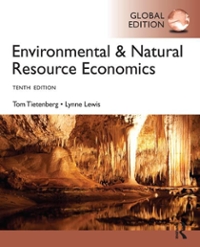Human lCapital Model: Fieinterpretthe human capital growth model as follows: Suppose there are two groups of people in a country, the lowskilled and the highskilled, where the lowskilled have less human capital per person initially than the highskilled. Each type of worker produces output independently from the other, using efficiency units of labor and total factor productivity, 2, which is assumed to be common across groups. Each individual in this economy accumulates human capital on their own,1 and each has one unit of time to split between human capital accumulation and work. Assume that the high skilled have initially higher efficiency of learning: bh :> bl , and that uh 6: ul . {a} In all developed countries, there has been an increase in the socailed skill premium, the gap between the wages of highskilled workers and lowskilled workers, over the last 3G years. Determine how this model can explain this observation. Consider the human capital growth model with the representative consumer. The efciencyr pa rameter of human capital accumulation technology is b. The total productivity factor is given by z = 1-5. Denote by H; the human capital accumulated in period t? and by u the time spent working in period t. Assume the initial human capital is H0 2 1. Now, assume the consumer has to choose between (v.1, b1) 2 (0.9, 10.35) and (152,52) 2 (0.8, 5.20). 1. Using the predictions of the Endogenous Growth Model for the consumption path, which set of (u, b) will you recommend to the consumer in the long term. 2. After how many years is your recommendation valid? 1 Incomplete Markets and Asset Prices This problem investigates the effects of market incompleteness on asset pricing following Constantinides and Duffie (1996). There is a continuum of individuals with identical CRRA preferences: u (c) = cl-7/ (1 - y) and subjective discount factor is 3. (a) Write down the Euler equation for individual i and asset j. This equation should relate the gross return Ri+1 to the growth rate of consumption for individual i: 41/c. (b) Now assume that the growth rate of individual consumption satisfies, (1) Ct where c+1/G is the growth rate of aggregate consumption. Here i+1 represents the idiosyn cratic component of consumption growth. Conditional on off1, at1/c, and Ri41, assume i+1 is independent across individuals and log zit, is distributed N(-207+1,07+1). The cross sectional variance parameter, off1, is a random variable from the point of view of time t, it becomes known at time t + 1. Note that of , is not assumed to be independent of ct+1/c and Ry (i.e. the three variables may be correlated with each other). Use the individual Euler equation from (a) to show that: 1 = BE. + (071 ) CHI ) RU41 (2) where (c) Specialize the above by assuming that, Oil = A- Blog Show that, holds with, 1 = 7+57 ( 1 + 7 ) B 3 = Bexp 57 (1 + 7)4) (d) How can these results help explain the equity premium puzzle?2 Two-Sided Lack of Commitment: Stationary Alloca- tions Consider the environment of Alvarez and Jermann (2000), where the economy is populated by equal number of two types of agents with perfectly negatively correlated endowment, both with lack of committment. Focus on the two-state case. Based on the result that for the symmetric case with 2 agents and 2 shocks the optimal allocation eventually reached a "memory-less" (history independent) allocation, we now seek to characterize optimal stationary symmetric distributions. (a) Given (c', c?), show that V' (c', () = I- Btwo(c') + (1 -w) u(c?)} where w = 1 - Bp 1+ 3 -2p3 Moreover, show that " is decreasing in & and increasing in p . (b) We call a stationary symmetric allocation feasible if it satisfies the resource and partici- pation constraints: d'+d =e V' (d, 2) 2 Vi (y',y?) (3) V? ( @, ( 7) 2 V2 (y', y? ) (4) Notice that autarky is always feasible. Show that in any symmetric allocation (4) never binds. That is, show that whenever (3) 2 holds then (4) automatically holds with strict inequality. (c) Show that full risk sharing is attainable if and only if: u (e/2) 2 wu (y' ) + (1 - w) u(y?) (5) (d) Here we use the comparative static results for w found in part (a) and the result in part (c) to examine the parameters that affect the feasibility of risk sharing. How do 3 and p affect the likelihood of full-risk sharing being feasible? Show that for small enough spread between y' and y? (holding e constant) full risk sharing is not possible. Let utility take the form u (c) = el-s/ (1 -o) show that if o is sufficiently close to 0 full risk is not feasible. (e) If full risk sharing is not attainable we are interested in the best allocation that is feasible. Using your results from part (b) show that if (5) is not satisfied the best symmetric allocation satisfies d+d = e wu (c') - u(y')] + (1-w) [u(c) -1(3?)]=0 and y?










